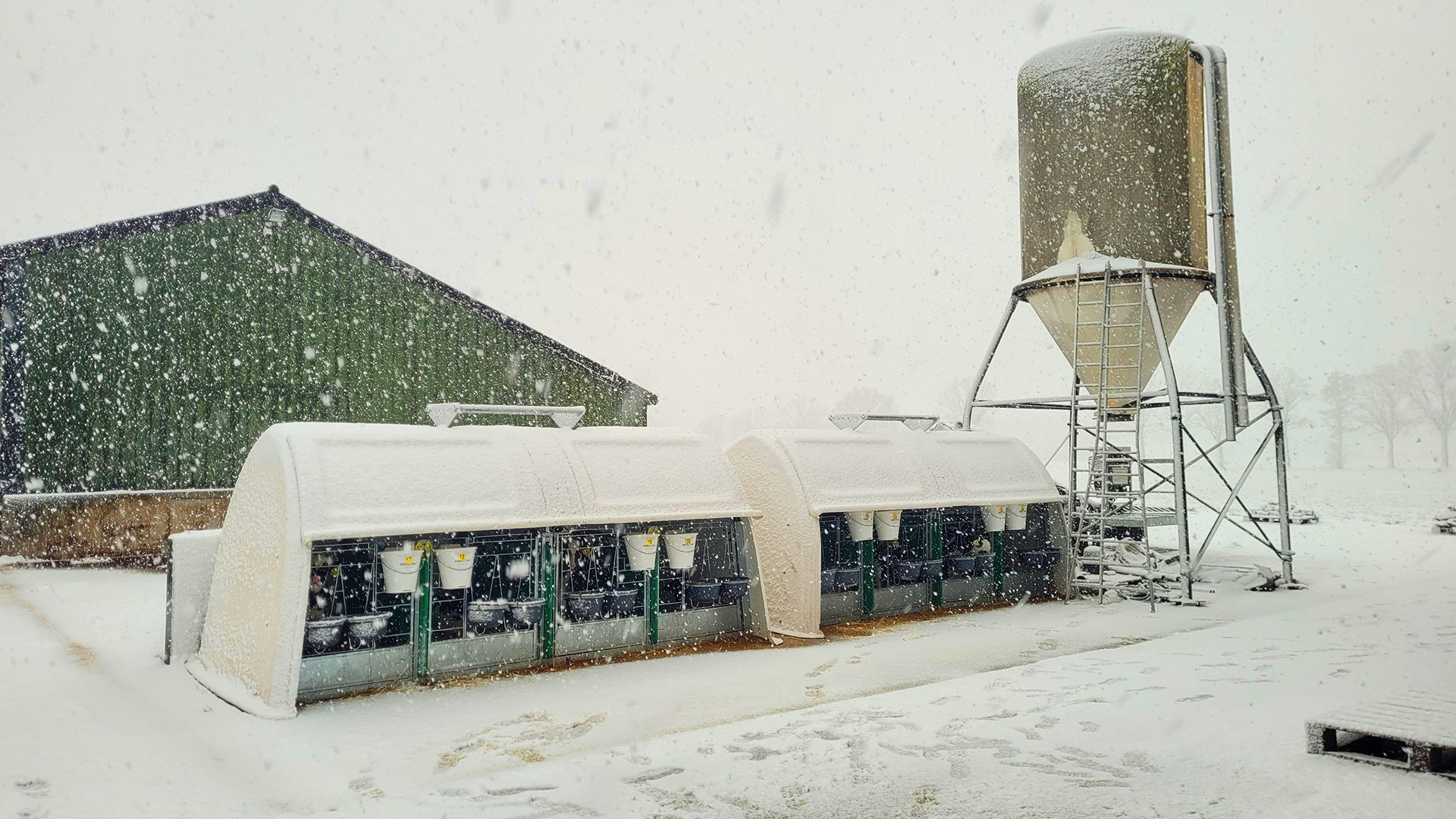They will consume more, but do not grow or develop any better, as they use feed for warmth instead of growth.
Good winter care for calves immediately pays off in health, labour efficiency, feed conversion, and ensures strong, productive cows in the future. The approach is simple, in cold weather, a calf needs:
• Sufficient and good-quality colostrum
• Draught-free housing and a dry surface under the pens
• A dry and comfortable bedding area
• Extra warmth in cold conditions
An optimal housing climate
A proper surface, protection against wind, draught, and moisture
Protection from wind prevents lung problems and draughts. Draught occurs when air movement combines with low temperatures, causing calves to cool down rapidly. It remains important that even on cold days there is enough fresh air in the barn and calf housing. In fresh, dry air, bacteria and viruses spread less easily, whereas condensation increases the risk of infection. Position the calf housing so that wind and draught cannot reach the calves, or use housing with partial shelter.
Rainwater can spread pathogens. Make sure that calf housing is placed on a solid surface with a slope so that rainwater drains away from the pen. A suitable surface drains rainwater quickly and prevents pathogens from being transferred from one housing area to another. It also prevents water from accumulating underneath the housing or in the outdoor area. This keeps the bedding drier and reduces the risk of calves coming into contact with contaminated water.
Is there no suitable surface available? Then choose outdoor housing with a floor. This prevents the bedding from coming into direct contact with water and keeps the resting area for the calves dry. Use plenty of straw so the animals have a safe and warm resting place.
Remove feed that has become too wet. Feed smaller portions more frequently to keep the feed as dry as possible. With the right feeding trough, such as the CombiFeeder, CombiFeederXL or AdlibFeeder, the feed stays dry more effectively.
Warmth
A thick layer of straw that the calf can almost sink into, plus a calf jacket or calf body warmer, helps retain warmth. This supports healthy development from the very first day of life. It is important that the calf is dry before putting on the jacket, and that it fits snugly. Adjustable straps help adapt the jacket as the calf grows. Choose a breathable fabric so the calf doesn’t become wet from sweating.
Depending on the calf, temperature, and climate, a calf bodywamer is especially beneficial during the first three weeks.
Is the bedding dry? Try the knee test: kneel in the pen and check if the straw is still dry. If your knees get damp, it’s time to add straw or clean out the pen.
Studies show better heat regulation and welfare with good bedding:
Mini Review – Bedding Management for Young Calves
Good nutrition
The first colostrum feeding is the best start a calf can get. Ensure that the calf receives colostrum as soon as possible after birth and that the colostrum is of good quality. Colostrum provides antibodies and energy, increasing the calf’s resistance. Check colostrum quality with a refractometer. Guidelines indicate how many antibodies a calf needs in the first 24 hours and how much the energy requirement increases at low temperatures. Extra milk or a higher-energy milk replacer can compensate for this increased energy use.
Investing in thermal comfort is investing in growth and in the future of healthy, strong, and productive cows.
Investing in warmth means investing in growth.
By investing in thermal comfort during winter, calves need less energy to stay warm, leaving more nutrients to growth and build resistance. This leads to more growth per kilo of feed, lower disease risk, and reduced costs.
With the right winter approach, you invest in calf growth and in the future of your stock: healthy, strong, and productive cows.
A warm calf today, a strong cow tomorrow.
Happy Calf, Happy Farmer
Would you like to optimally support your calves during the winter and discover how smart calf housing makes the difference?
Contact the CalfOTel team for advice — we’ll be happy to help!
All practical tips in one overview — check out our winter checklist




